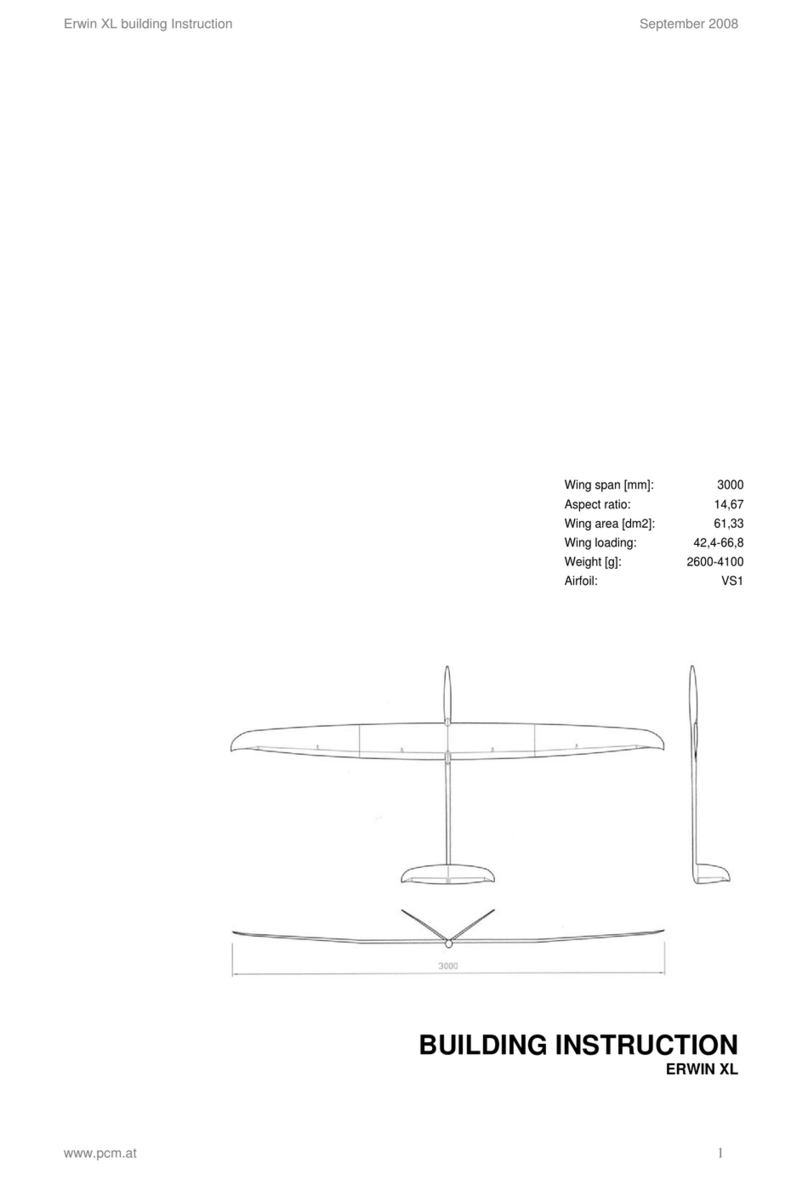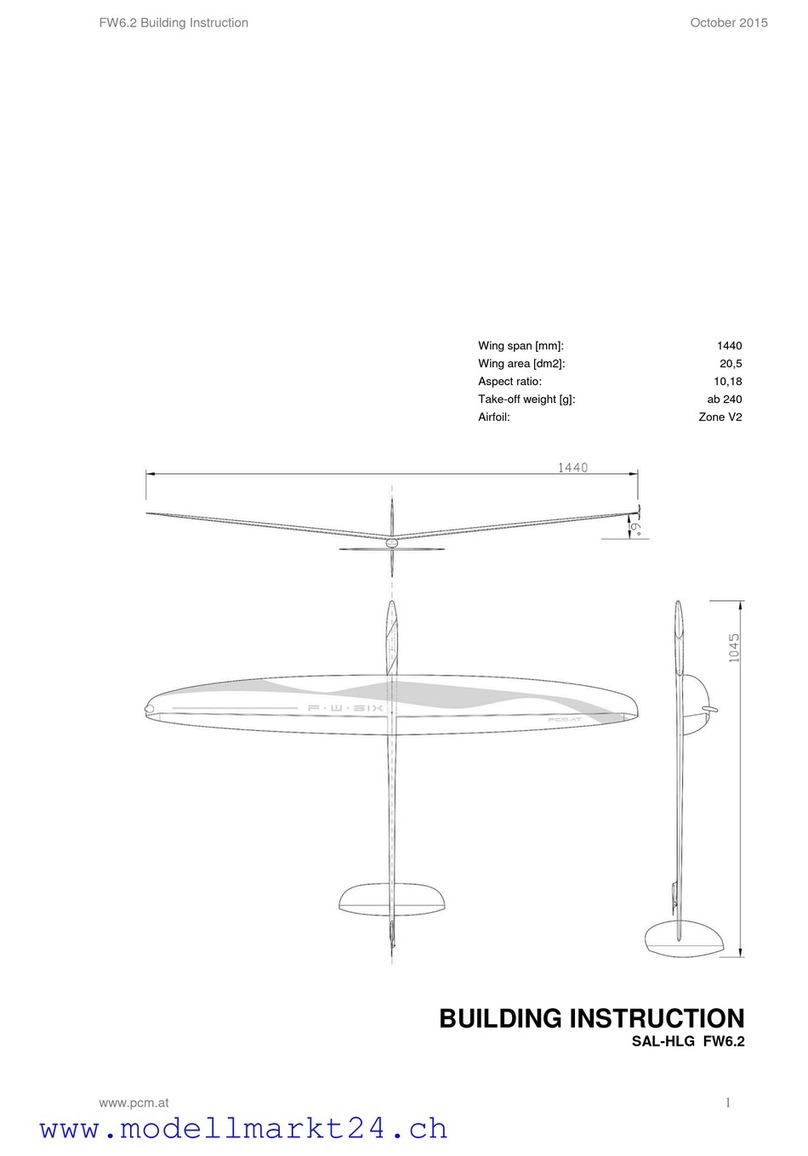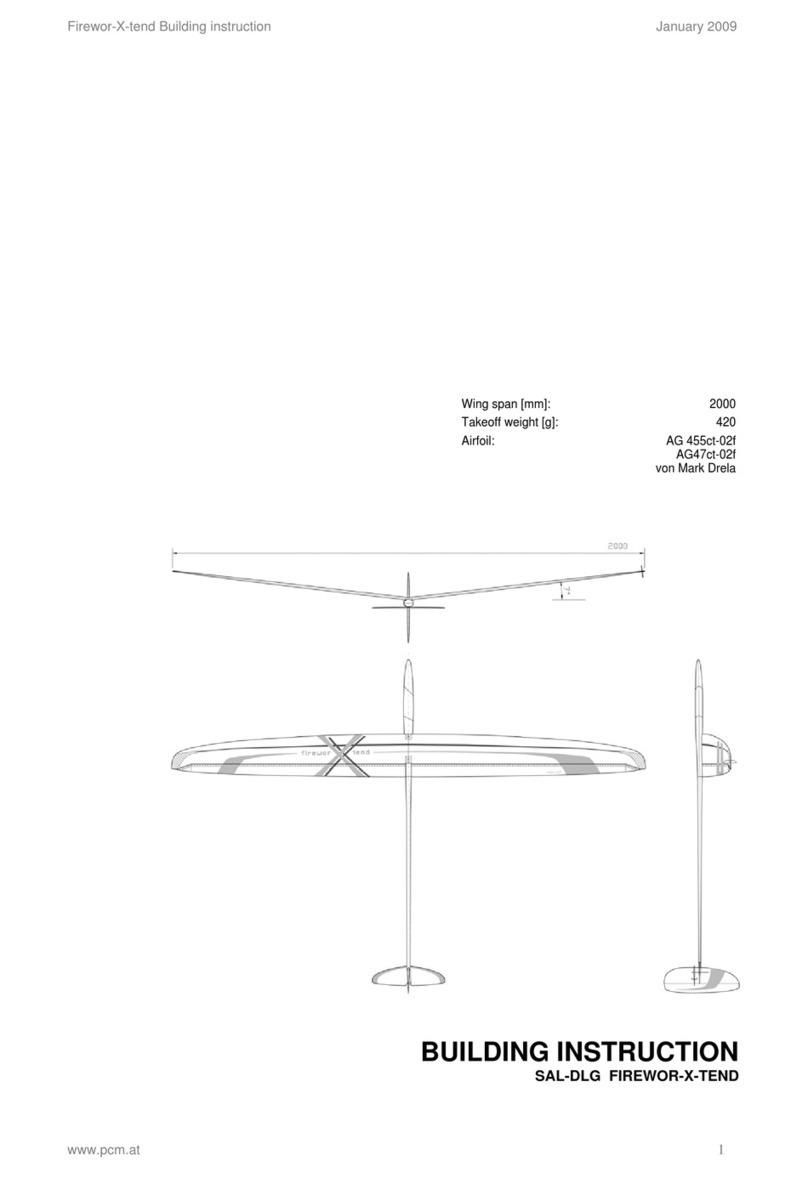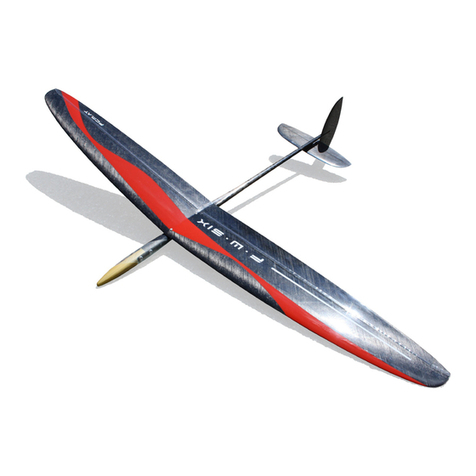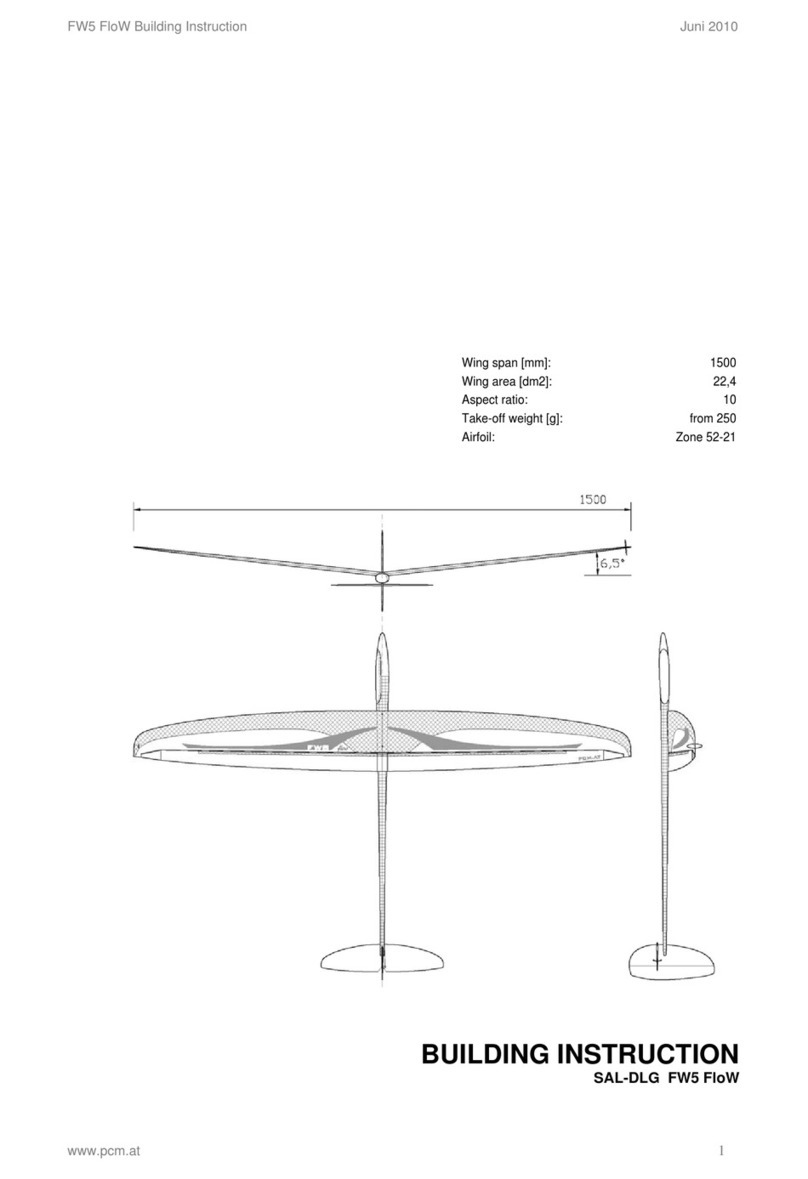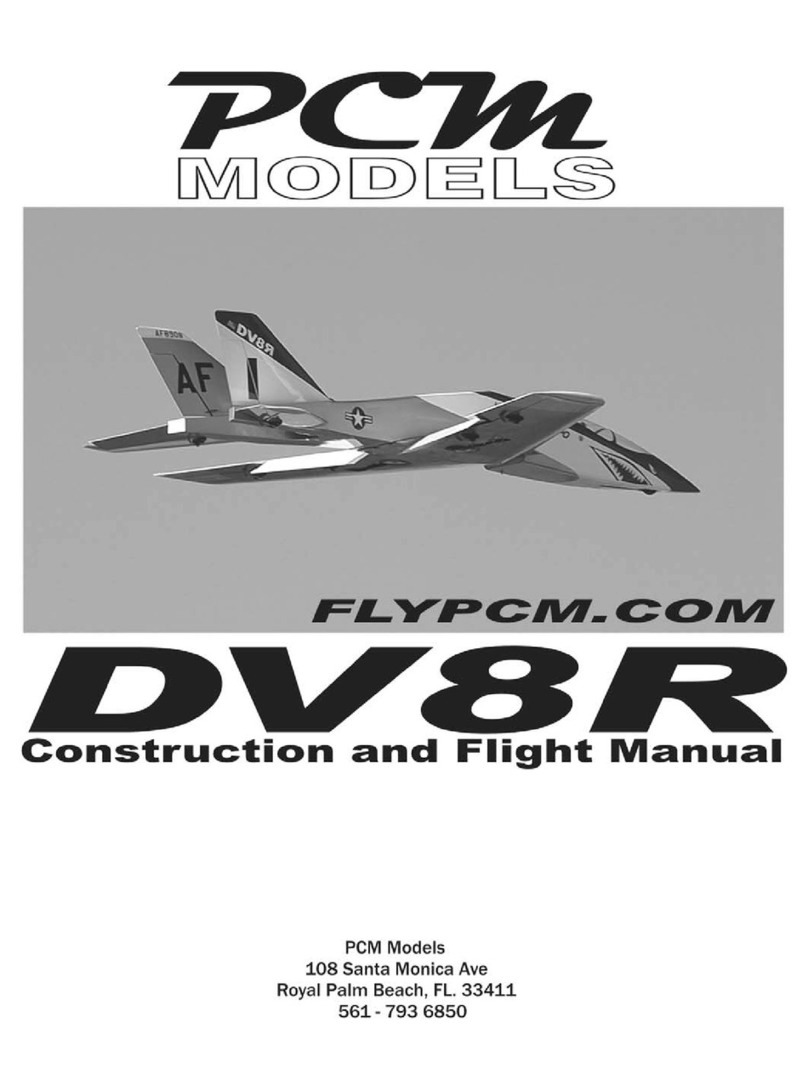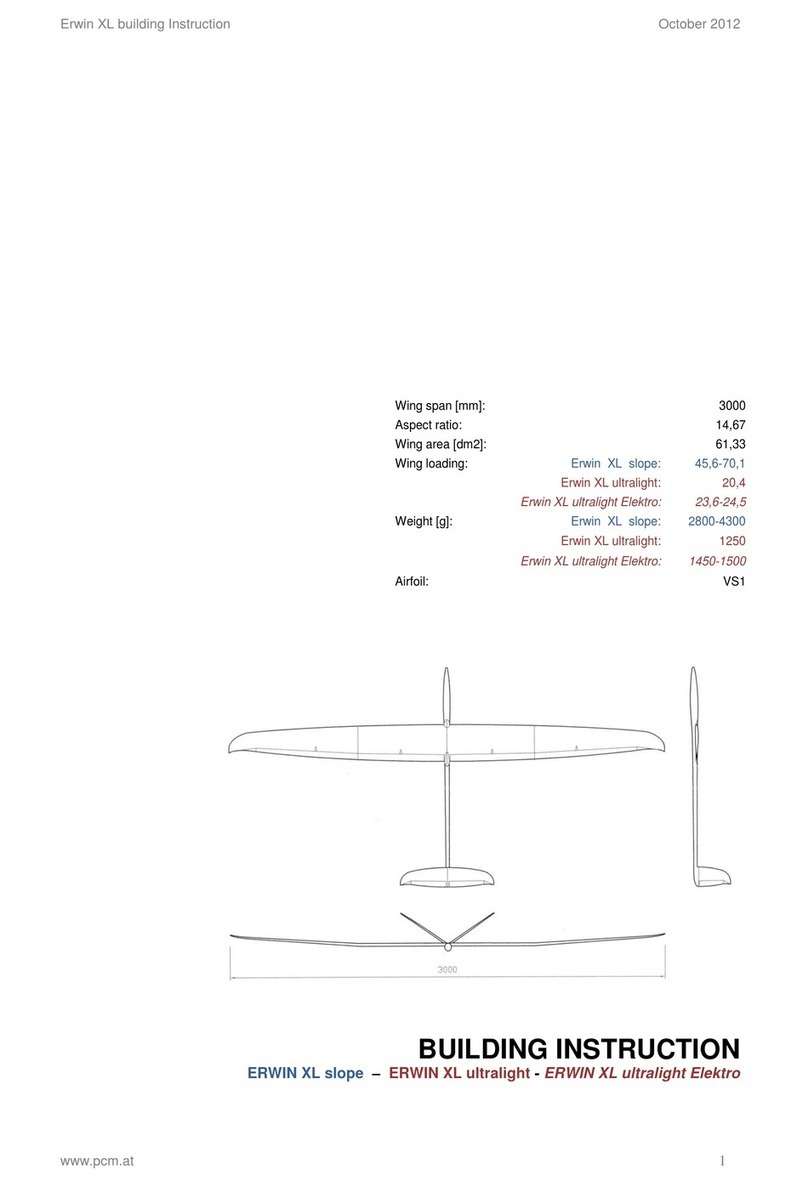ASSEMBLING THE MODEL
5. General information on DLG-models
DLG-models - such as MINI-Fireworks - are constructed strong enough to withstand the demands
of starting, flying and landing and at the same time light enough to achieve the least possible flying
weight. Each part is dimensioned to its possible minimum and produced using lightest and fewest
material.
In order to continue this concept, please account the following when you assemble the model:
- Always use glue sparingly. Grind all gluing spots thoroughly, before you apply the glue.
- Electronic components should be placed as far as possible to the front, as you normally
need additional lead in the nose of the fuselage to achieve the necessary centre of gravity.
- For the same reason try to save weight especially when you finish and mount the
stabilizer.
- If you don’t have any experience in working with resin or if you prefer an easier method, you
can combine the carbon rovings and glass fibre with super glue: Put some drops of super
glue on the rovings or the fibre, spread and press it with a (rustling) plastic bag. You will also
save one or the other gram with this method.
As both versions (Mini-S controlled by elevator/rudder and Mini-Q controlled by elevator/aileron)
are described in the following, you can skip the parts of the instruction, that don’t apply to your
model.
Push the boom into the middle part of the fuselage, until the
boom stands out 530mm. If the boom can’t be pushed out
far enough, you can sand off some material inside the
middle part of the fuselage.
Before you glue the boom, check that the servoboard can
be fixed to the boom inside the fuselage later according to
the picture. The flat side of the boom should be on the
upper side, the round one on the downside.



